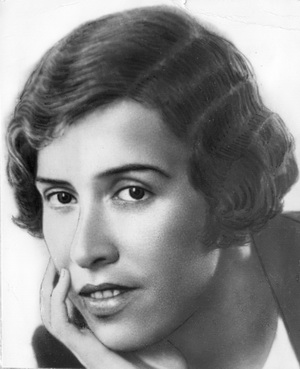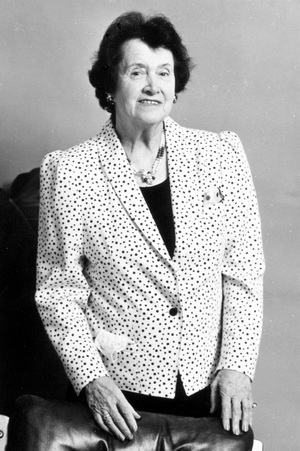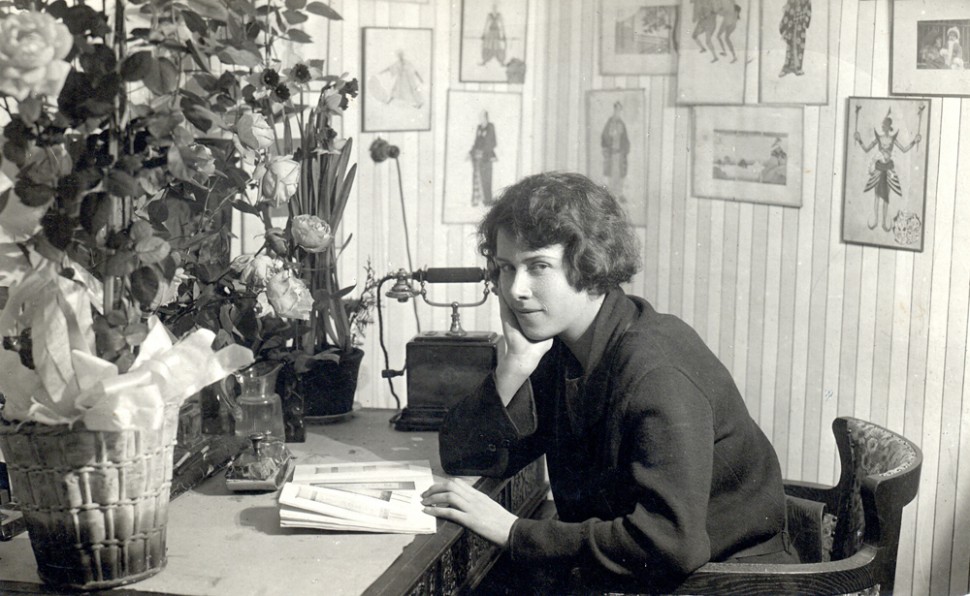Natalia Sats (27.08.1903, Irkutsk – 18.12.1993, Moscow) – Soviet theatre director, the first woman-opera director, founder and head of six professional theatres for children, including the first in the world drama and music theatres for children.
At the 1st ASSITEJ Meeting in Paris at the suggestion of Leon Chanssarel Natalia Sats was unanimous awarded the title of The Mother of Theatres for Children.
USSR State Prize Laureate (1972),
People’s Artist of the USSR (1975),
Lenin Prize Laureate (1982),
Hero of Socialist Labor medal (1983),
Lenin Komsomol Prize Laureate (1985).
Member of USSR Union of Writers (1962).
Starting from 1981 Natalia Sats lectured at the Russian Academy of Theatre Arts, in 1984 she became a professor.
Natalia Sats was an active propagandist of music art for the children. Author of plays, librettos of operas and ballets for the children, as well as books and articles devoted to music education.
Natalia Sats – a person of the legendary fate – was born into a family of famous composer Iliya Sats (a friend and protege of Leo Tolstoy) and opera singer Anna Shchastnaya.
In 1904 family moved to Moscow, and in 1906 Iliya Sats started in a position of music director of the Moscow Art Theatre. World-wide famous theatre and music leaders, such as Sergey Rakhmaninov, Konstantin Stanislavsky, Eugeny Vakhtangov, Vasily Kachalov, Leopold Sulerzhitsky were friends of Sats family.
After the October Revolution in 1917, Commissar of Education Anatoly Lunacharsky proposed to start a theatre for the children and the Moscow Art Theatre director Konstantin Stanislavsky recommended the 15 year old Natalya Sats. After many stage successes, she received both Russian and international recognition.
In 1918 on Natalia Sats’s initiative The Mossovet Children’s Theatre – the first theatre for the children – has been founded.
In 1921 she founded The Moscow Theatre for Children (in 1936 theatre was re-named for The Central Theatre for Children, now it is known as Russian Academic Youth Theatre).
Starting from 1921 and until she has been arrested in 1937 she held a position of the managing and artistic director of The Moscow Theatre for Children.
In the twenties she was awarded title of the Honoured Artist of Russian Soviet Republic. Her productions for children The Black Boy and the Monkey, About Dziuba, The Golden Key, Seriozha Streltsov and others were a great success among spectators and the press.
In thirties Natalia Sats receives a lot of invitations to stage performances abroad. Opera productions she staged in the collaboration with world-wide famous conductor Otto Klemperer – Verdi’s Falstaff (1931, Berlin) and Mozart’s The Marriage of Figaro (1931, Buenos Aires) were internationally recognized. Using her friendship with Sergei Prokofiev, she commissioned him to write Peter and the Wolf, which she premiered May 2, 1936. This play has received a wide international success, was recorded over 400 times, and translated to a number of languages.
In 1937 Natalia Sats was arrested as “Traitor of Motherland family members”. Her husband Israil Veitser, USSR statesman was repressed. The US ambassador attended one of Natalia Sats shows and it gave rise to her arrest. One single night that she spent in a ward at the Lubyanka prison made her completely grey-haired. She was charged with high treason and called political spy. She was sentenced to five years at a labor camp in Siberia. But even during her imprisonment she founded a theatre in a camp.
At the end of her sentence, she was not allowed to return to Moscow, and moved to Alma-Ata (now Almaty, Kazakhstan), where a lot of famous actors lived in evacuation at that time. Thanks to Natalia Sats energy the Alma-Ata Young Spectator Theatre has been opened in 1945, which was headed by her for 13 years.
After Joseph Stalin’s death in 1953, Sats was fully rehabilitated and returned to Moscow in 1958. In Moscow she leaded Russian Touring Theatre and then – kids department of the Mosestrada. She selected a repertoire for children’s matinees and concerts, and looked for the plays and music pieces, which could be used for performances staging.
With the support of Russian cultural elite, she demanded to be given an opportunity to start a new theater for the children. They didn’t have a building. Operas and ballets for children were a very rare thing at that time. It was very difficult to find actors who would like and were able to work at such a theatre. But her strong will, confidence and love for children overcame all these difficulties. After seven years, in 1965 she founded and became a head of the first in the world Music Theatre for Children.
With her troupe, she traveled all over the world – from Japan to Germany, performing in many countries and languages. Many famous Russian composers, such as A. Alexandrov, L. Polovinkin, D. Kabalevsky, T. Khrennikov have been got involved by Natalia Sats to work at her theatre.
At Natalia Sats suggestion The Blue Bird of Happiness from Meterlink famous play became a symbol of the theatre and soars over the Music Theatre for Children named after Natalia Sats.
Natalia Sats died 18 December 1993, and was buried at the Novodevichy Cemetery in Moscow next to her father.










